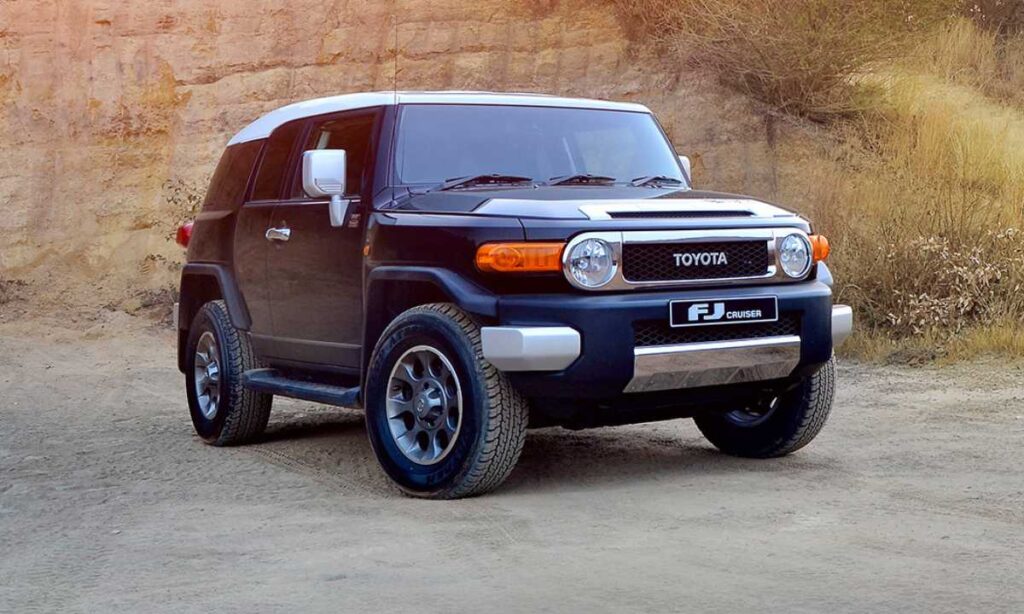Buying Used: Toyota FJ Cruiser (2011‑2023)
Charlen Raymond – 4 Nov 2025
The Toyota FJ Cruiser is back in the spotlight, with the new Land Cruiser FJ already on the road, but the original 2011‑2023 model still deserves a second look if you’re hunting a used SUV in South Africa.
Why the FJ stands out
The FJ Cruiser kept Toyota’s iconic “FJ40” spirit alive with its boxy, retro look and raw off‑road chops. Launched on the South African market in 2011 (after a six‑year wait for a right‑hand‑drive version), the body‑on‑frame 4×4 ran until 2023 and found a niche among motorists who wanted something more rugged than the Prado or Fortuner.
It stayed true to itself: a 4.0‑litre V‑6 engine, part‑time four‑wheel drive, and a focus on durability over fancy tech. The result was a cult‑favorite that still fetches solid resale prices.
Basic specs
| Feature | Details |
|---|---|
| Length | 4 675 mm |
| Wheelbase | 2 690 mm |
| Seating capacity | 5 |
| Boot space | 782 L |
| Ground clearance | 240 mm |
| Approach angle | 34° |
| Departure angle | 30° |
| Towing capacity | 3 100 kg |
| Engine | 4.0 L V6 (1GR‑FE) – 200 kW @ 5 600 rpm, 380 Nm @ 4 400 rpm |
| Top speed | 175 km/h |
| 0‑100 km/h | 8.7 s |
| Transmission | 5‑speed automatic (A750F) |
| Fuel tank | 72 L (up‑gradable to 159 L) |
A rundown on the Toyota FJ Cruiser
The FJ was sold as a single‑spec model in South Africa, powered by the reliable 1GR‑FE V‑6. It paired that engine with a five‑speed automatic, all‑timed four‑wheel drive that includes low‑range gearing, an electronic rear‑diff lock, and Active Traction Control for sand or mud. Optional accessories let you boost the 72‑litre tank to 159 L.
Over its run, the FJ saw some minor updates. In 2013 and 2020 the infotainment system got a boost, and crawl control was added after 2015. The core design—boxy styling, upright dash, and practical armour‑style doors—remained unchanged.
Its off‑road credentials are solid, thanks to 34‑inch tyres on 17‑inch wheels and a chassis that can handle tough terrain. Inside, the cabin is utilitarian: chunky plastics, a hands‑friendly dash, and a “letterbox” windscreen that can limit visibility. Split rear doors (no B‑pillar) and a shoulder‑sized spare wheel on the tailgate add to the quirky charm—but they can be a nuisance when you need quick reverse visibility.
What to look out for when buying a used Toyota FJ Cruiser
- Service history – Full Toyota records mean the original five‑year/unlimited‑km warranty is still in force on later models. The V‑6 loves regular 10 000 km oil changes.
- Engine & drivetrain – The 1GR‑FE is tough but thirsty. Check for smooth revving; misfires may mean worn coil packs. A clunking prop‑shaft at low speeds can signal worn U‑joints or a torque‑converter imbalance.
- Transmission – The five‑speed auto is robust, but without a cooler it can overheat driving through sand or mud.
- Suspension & off‑road fitment – Inspect the underbody and chassis rails for rust; shocks and bushings may fail after heavy off‑road use. The spare tyre on the tailgate can creak; a reinforcements kit is wise.
- Body & visibility – Chunky C‑pillars and the spare on the tailgate can block sight lines. Test the reverse camera and check the rear‑door “suicide” seals for leaks – water can get into the boot.
Which one to get?
Because the FJ was sold as a single‑spec line, your main choice is the year. The 2023 model is the clear winner if you’re looking for up‑to‑date tech – a refreshed infotainment system, crawl control, and refined diff locking – while still preserving that retro appeal. Older models are cheaper but carry more blind‑spot issues and lack the latest convenience features.
If you’re ready for a weekend warrior that can tackle anything from dusty roads to muddy trails, a 2023 FJ Cruiser offers the best balance of reliability, performance, and value on the used market.






